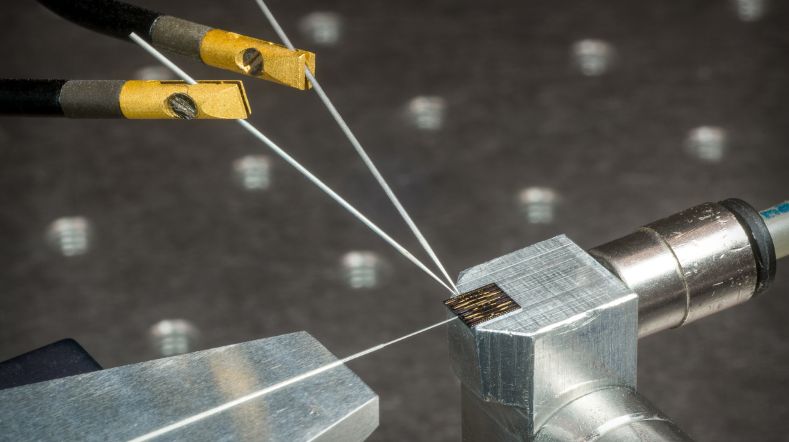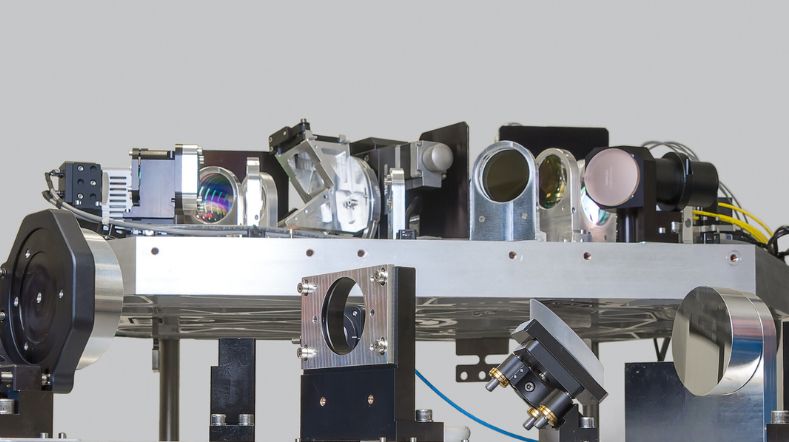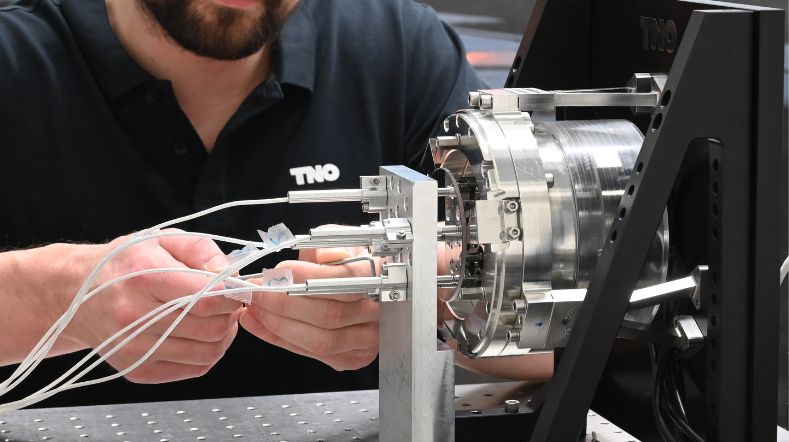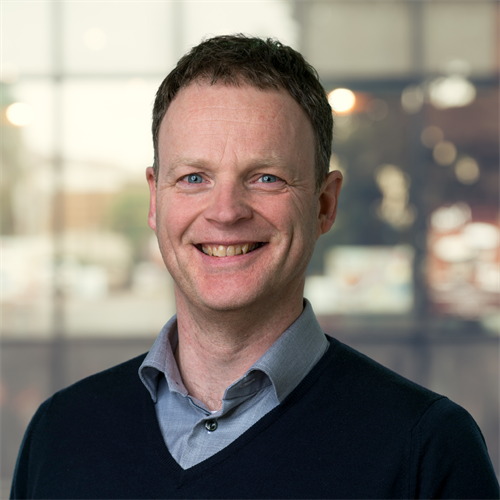Our role in semicon and quantum
Industry is constantly striving to create smaller, more efficient, and more powerful chips. The challenge is to produce these chips as cost-effectively as possible. We’re the ideal partner for designing this semiconductor equipment, as we create new solutions that drive the development of our industrial partners. And we’re unlocking new opportunities for the semiconductor industry of the future.
Metrology and equipment concepts
We develop new machine concepts, including optical lithography, optical metrology, and scanning probe microscopy (SPM). Read more.
Quantum technology in development
Quantum technology drives technological progress. Check out the explanation of superposition and entanglement and read more about our quantum applications.
Preventing ultraviolet lithography contamination
TNO is a leader in contamination control, both for immersion lithography tools and for recent innovations in EUV lithography. Read more.
What we do for the semiconductor industry
An overview of what TNO does for the semiconductor industry:
- Alongside Philips, we were one of the four architects of lithography equipment based on extreme ultraviolet light (EUV lithography) in the consortium. This consortium was led by ASML and Carl Zeiss.
- We’ve developed several first-generation modules (e.g., reticle handler, position sensor). The designs have since been further developed by ASML and its partners, but they’re still easily recognisable.
- We’ve specialised in equipment development (immersion & EUV lithography, new metrology concepts), the creation of test and qualification equipment, and research and innovation (R&D) for contamination control.
- We invest in quantum technologies, heterogeneous integration, and integrated photonics. This ensures that we’re ready to deal with future issues raised by our partners.
QuTech: institute for quantum technology
TNO believes in quantum technology as an extension to developments in nano and semiconductor technology. Together with Delft University of Technology and with support from the Dutch government, we’ve founded QuTech. QuTech is an institute for the development of the first quantum computer and the quantum internet. Together with Microsoft and Intel, KPN, our spin-off companies, and other European RTOs such as Fraunhofer Gesellschaft and CEA, almost 300 scientists and engineers are working towards this ambition. Watch a first demonstration of quantum computing at Quantum Inspire or for more information, go to QuTech. In addition, we’re engaged in research on new sensors based on quantum technology. Research infrastructure has been set up and partners are receiving one-on-one support. We’re also studying applications of quantum technologies in the fields of ICT and defence and security.
Supporting Dutch manufacturers
We want to help Dutch manufacturers shape the information-driven society through key technology. This is necessary for almost all sustainability goals and should result in sustainable jobs and GDP growth. We provide one-on-one support and help in the development of ecosystems with a strong position in the Netherlands. TNO works with market leaders worldwide to stay in touch with current trends and technologies.
Partners in semiconductor equipment
We collaborate with large technology companies such as ASML, Carl Zeiss, Intel, and Microsoft, and with Dutch innovative SMEs such as Bronkhorst High-Tech B.V. Often in confidential projects, because it’s the fastest route to valorisation. For less developed technologies, TNO collaborates in European consortia (e.g., KDT projects), national consortia (e.g., PhotonDelta and QuantumDeltaNL), and even through shared development programmes (e.g., QuTech). In addition, TNO wants to support Dutch SMEs, specifically through technology transfers such as licensing and spin-out activities. TNO is proud that innovative Dutch SMEs use – or have used – TNO IP. These include Delta Diagnostics, Hittech, LansEngineering, Mecal, Nearfield Instruments, Somni, Technobis, Technology of Sense, Valley Optics, FastMicro, Orange Quantum Systems, and QBlox.
Into the future together
We want to support equipment manufacturers and others active in the semiconductor industry, now and in the future. The requirements for this equipment are increasingly challenging. For example, mixed machine overlay requires more precise lithography systems. Systems are becoming more expensive, which increases the demands on productivity, service life, and reliability. To achieve this, we’re developing technology to measure ever smaller particles and thermal control concepts.
TNO and new technologies
Smaller features require more precise metrological equipment. We’re therefore carrying out research on near-field optics, metamaterials, and other groundbreaking methods to extract information from nanometre-sized properties. Equipment design requires new approaches, such as STOP analysis and artificial intelligence. And quantum technology will not be a new, isolated market, but will provide more accurate sensors for controlling equipment. Furthermore, at the chip level, the well-known CMOS industry is being enriched with photonic integrated chips, and high-performance computing is being expanded to include quantum computers. TNO is active in all these technologies.
Whitepaper: Synergy between quantum computing and semiconductor technology
Silicon-based spin qubits are a natural match to the semiconductor manufacturing community, and several industrial fabrication facilities are already producing spin-qubit chips. In this paper, we discuss our latest results in spin-qubit technology and highlight where the semiconducting community has opportunities to drive the field forward.
Get inspired
Photonic Integrated Circuits


Optics


Semicon equipment and metrology
Semicon equipment lifetime
Optomechatronics


